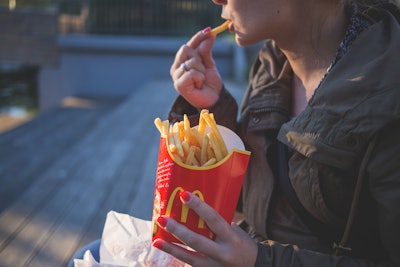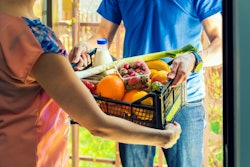
FoodBoss released a ‘State of the Food Delivery Industry Report’ with updates about how the COVID-19 epidemic has impacted the food delivery and restaurant space.
Closures of restaurants and bars across the country began this weekend as officials began to implement strict ‘social distancing’ measures to contain the spread of the virus.
Health officials confirmed the virus spreads most easily through face-to-face interaction. To slow and limit the spread, officials for weeks now have advised people to refrain from gathering in large groups where many people can spread the virus rapidly.
Heeding this advice, states and cities across the country have taken drastic measures to limit the spread. Governors from Ohio, Illinois, Massachusetts, Washington, Connecticut, New York, New Jersey, Pennsylvania and more, in addition to numerous mayors across the country, such as in New Orleans, San Francisco, Los Angeles, Miami, Austin and more, closed down restaurants and bars.
While dine-in options at restaurants are closed, officials have permitted food delivery and pick up from restaurants to continue. During this time, some restaurants across the country have seen an increase in demand for their food delivery services.
Data from FoodBoss show some of the largest increases in food delivery demand by restaurant are:
- 12.9% Little Caesars
- 12.5% McDonalds
- 10.7% Dunkin’ Donuts
- 24% Arby’s
- 22.7% KFC
As officials saw in China, food delivery was an asset to the areas hit hardest by the Coronavirus. Contactless delivery, which most of the largest food delivery companies in the US also adopted, allowed consumers and couriers to avoid risky face-to-face interactions while still feeding a population largely restricted to their homes.
While many people continue to quarantine themselves to their homes by choice, or by order such as in New York or Illinois, food delivery remains a safer alternative to grocery shopping or venturing outside to find food.
According to the Center for Disease Control, food delivery remains a safe option since there is no evidence that Coronavirus can be transmitted through cooked food itself or food delivery packaging materials.
According to the CDC website, "Coronaviruses are generally thought to be spread from person-to-person through respiratory droplets. Currently there is no evidence to support transmission of COVID-19 associated with food. Before preparing or eating food it is important to always wash your hands with soap and water for 20 seconds for general food safety."
As seen in China, demand for food delivery throughout the Coronavirus crisis rose 20%. Not surprisingly, in the U.S., demand for food delivery rose 23.1% from February to March, during which time President Trump officially declared a national emergency and the World Health Organization classified the crisis as a pandemic.
As the country essentially finds itself in an ‘all hands on deck’ situation, food delivery companies are doing their part during this crisis. As mentioned earlier, most now offer contactless delivery, and others are taking steps to ease the burden small restaurants face with forced closings.
As demand for food delivery increased, consumers initially faced higher fees which have now stabilized as third-party delivery services and restaurants work together during this time to provide an essential service to consumers. For complete information about food delivery - to make the most informed decision - use FoodBoss to sort between multiple food delivery services at once to find the lowest fees, or fastest delivery times.
















